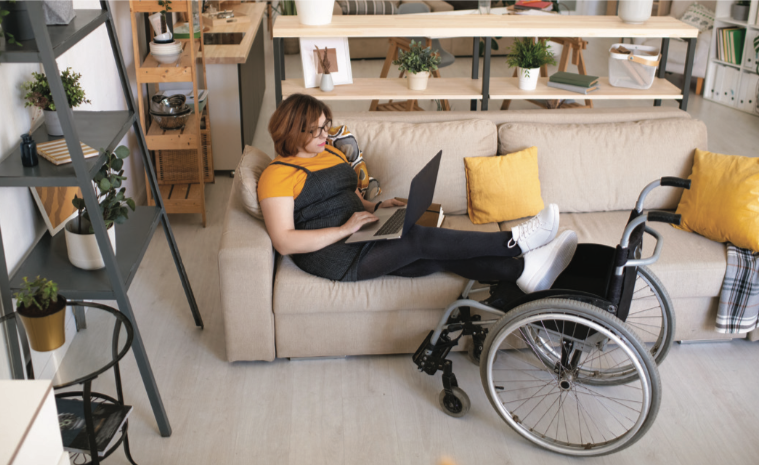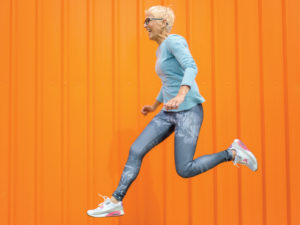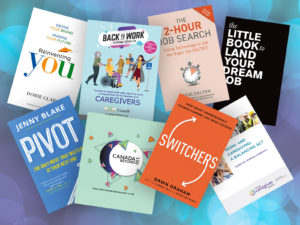BY JOEL DEMBE
The COVID-19 pandemic has upended the way we live, work and interact with others. For persons with disabilities, it has magnified some of the challenges and disparities that continue to make life more difficult than it should be. However, as I’ve recently noted, it’s also proving that digital technologies and innovation can help to remove long- standing barriers to inclusion amid this global crisis.
As regions across Canada begin reopening and entering into a new normal, it’s important we not forget about the inherent risks that persons with disabilities will continue to face for the foreseeable future.
Without a viable vaccine, those risks will create a multitude of daily obstacles. Persons with disabilities (PWD) and their friends, family and caregivers around them will need to take serious account of their choices each day when it comes to re-entering restaurants, retail or office spaces.
For independent wheelchair users like myself, the coronavirus ‘experience’ has developed into a bizarre grey area of choices when it comes to living a normal life.
On one hand, I feel healthy. I’m lucky in that I’m able to work remotely from the office. And I continue to be socially active, albeit in the digital world. On the other hand, there are specific medical conditions that I possess—namely a severe scoliosis that has a slight impact on my lung-air supply—that could leave me more susceptible to the impact of the disease.
If the past few months have taught me anything, it’s the importance of setting up daily routines.
My advice to individuals with disabilities living through COVID-19 is this: Build multiple routines into your life: A routine for grocery shopping. A routine for staying active and healthy. A routine for working productively in a remote environment. And most importantly, a routine for staying in touch with your family and friends.
My advice to the Canadian business community is this: no decision should ever be made in a silo. Speak regularly with health professionals, community leaders and directly to persons with disabilities themselves.
To expand on this advice, I’ve put together some personal thoughts from my experience living through these past few months:
Working remotely
I consider the coronavirus to perhaps being the great ‘equalizer’ for employees with disabilities. Many persons with disabilities were already perfectly set-up to work in a remote environment—long before COVID-19 was declared a pandemic—through accessible technologies.
As for myself, the stress of commuting into the office is now over. Pre-COVID, my regular commute was over an hour each way. Now, I’m able to dedicate more time to keeping my body healthy while at home. My new morning routine consists of exercises and stretching, rather than sitting uncomfortably on a train.
I’m also able to switch seating positions on a regular basis at home. Instead of being stuck in a wheelchair all day at my desk, I can lay in bed or sit in my reclining chair when my body feels stiff. Furthermore, I’m able to wear more comfortable clothing at home instead of wearing buttoned-up shirts and suits each day. Getting dressed for work is no longer the arduous process it once was.
After three months away from the office, I feel like my body has been given some serious ‘R & R’ and I’m not sure I could go back to the same commuting lifestyle I had pre-pandemic. My hope is that Canadian employers continue to explore and expand their remote-work options, especially for those who are more vulnerable during the pandemic. I believe it would allow for more persons with disabilities to join the workforce, something that’s sorely lacking in Canada.
With employers in the process of return-to-premises planning for their employees, they’ll need to ensure persons with physical disabilities are considered at all times. For individuals like me who use wheelchairs, the complications of social distancing in an elevator, touching everything with hands and using a bathroom stall will make this planning even more complex.
To avoid these complexities, I believe remote- work options are the best path forward for those who are more vulnerable to coronavirus.
Shopping
As COVID-19 case counts grew rapidly throughout Canada back in March and April, major grocery chains made a great choice in allowing for a dedicated hour in the morning for disabled and elderly customers. This made shopping safer—and easier—for my wife and me. We were able to adhere to social distancing guidelines and spend less time worrying about bumping into others in the store.
I also took advantage of retail stores pivoting to curbside pickup. No longer did I have to spend time loading and unloading items—including my wheelchair—into the car. Store staff were able to do that for me. And certainly, using cashless check-out options (Apple/Google Pay) made the experience even more seamless.
Now that I’m venturing back into stores again, I’m realizing how important automatic doors, ramps and wide aisles are for safety purposes. If retail spaces didn’t have these implemented before COVID-19, they really should be now. For smaller businesses who operate a non-accessible storefront, an online delivery option can be an important alternative.
Support systems
I’ve realized how important a support system is for those who are at-risk. I was lucky in that my wife did the majority of our shopping in the early days of the pandemic. It gave us more confidence that we were staying safe.
But not everyone has this option.
In fact, many PWD’s don’t have the ability to leave their homes on their own. That’s why caregivers, including family and friends, will continue to play a critical role in helping persons with disabilities during this global crisis. Of course, caregivers have the added responsibility of not only providing assistance with errands, but also ensuring safety protocols are met (cleaning surfaces, wearing personal protective equipment and self-monitoring for symptoms). Speaking with colleagues of mine who look after their elderly parents, I cannot imagine the stress this must create.
I hope that we continue to find ways to support caregivers who dedicate their lives to helping the most vulnerable in our society manage through COVID-19. Without them, this crisis would be far worse.
Joel Dembe, CAF Patrons Council, Canadian Paralympian, Executive Communications, Royal Bank.





